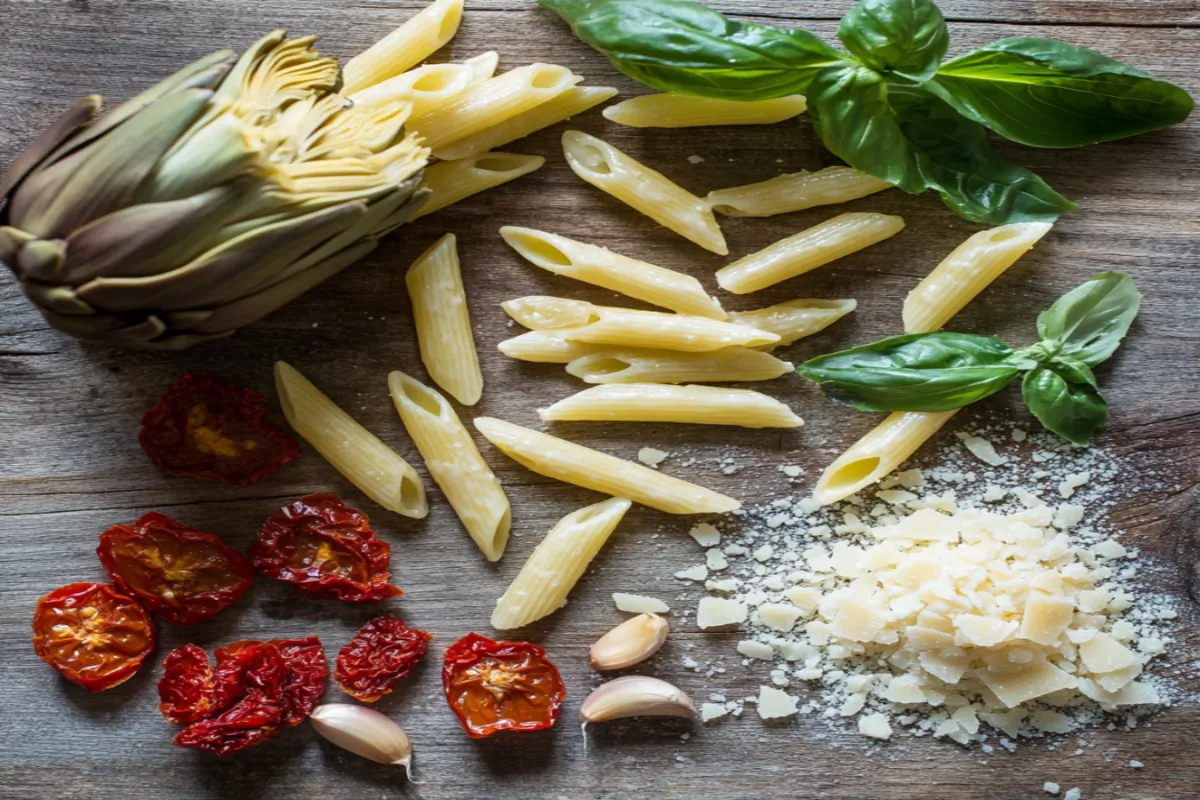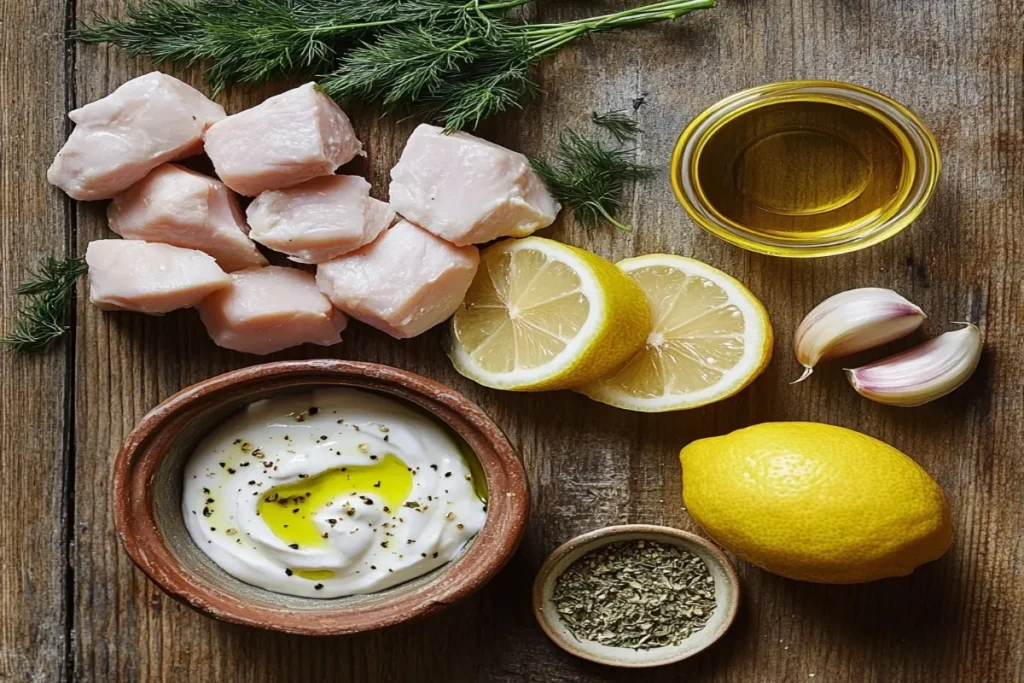Introduction to Mediterranean diet dinner:
Mediterranean cuisine is renowned for its vibrant flavors, fresh ingredients, and incredible health benefits. By preparing Mediterranean dinner recipes, you bring a taste of the Mediterranean coast to your table. These dishes are not only mouthwatering but also packed with nutrients, offering the perfect balance of proteins, healthy fats, and fresh vegetables.
The Mediterranean diet dinner diet has been globally recognized for its contribution to heart health, reduced inflammation, and overall wellness. With an emphasis on fresh produce, lean proteins, and healthy fats, this cuisine provides a flavorful way to improve your eating habits. Whether you’re a seasoned cook or a beginner, exploring these recipes will transport you to the heart of Mediterranean living, where every meal is a celebration of taste and health.
The Mediterranean region spans numerous countries, each contributing unique culinary traditions. From the creamy hummus of the Levant to the olive-studded pasta dishes of Italy, there is an endless array of recipes to discover. Incorporating these dishes into your lifestyle will not only elevate your meals but also offer a culinary adventure that embraces simplicity, freshness, and robust flavors.
Essential Ingredients in Mediterranean Cooking
The Role of Olive Oil
Olive oil, often referred to as “liquid gold,” is a cornerstone of Mediterranean cooking. Moreover, its rich, fruity flavor enhances everything from salads to sautéed vegetables, making it indispensable in the kitchen. In addition, olive oil serves as a healthier alternative to other fats, offering a unique depth of flavor. For instance, it can be used in dressings, marinades, and even as a finishing touch for soups or pasta. Thus, it remains an essential ingredient in Mediterranean cuisine.
Why Choose Olive Oil?
- Extra Virgin Olive Oil: Firstly, opt for extra virgin olive oil for the highest quality. It is minimally processed and, as a result, retains more nutrients and antioxidants.
- Health Benefits: In addition, olive oil is packed with healthy monounsaturated fats and antioxidants. Consequently, it is known to improve heart health, lower cholesterol levels, and reduce the risk of chronic diseases. Therefore, incorporating it into your diet is both a flavorful and health-conscious choice.
Uses in Cooking
- Dressings and Marinades: A drizzle of olive oil enhances the flavor of salads and marinades.
- Cooking and Frying: Use it for light sautéing or frying to preserve its nutritional properties.
- Finishing Touch: Add a splash of olive oil to soups, pasta, or roasted vegetables for a richer flavor.
Olive oil is also an integral part of traditional dipping sauces, like the simple combination of olive oil, balsamic vinegar, and herbs served with crusty bread. Its versatility ensures it finds a place in nearly every Mediterranean meal.
Fresh Vegetables and Herbs
The Mediterranean diet strongly emphasizes seasonal, fresh vegetables and aromatic herbs. These ingredients enhance the taste of dishes and provide a wealth of vitamins and minerals.
Commonly Used Vegetables
- Tomatoes, cucumbers, and bell peppers: These staples bring vibrant colors and textures to salads and main dishes.
- Zucchini, Eggplant, and Spinach: Ideal for hearty meals and stews.
- Artichokes and Olives: Their briny and earthy flavors elevate many dishes.
Aromatic Herbs
- Parsley, mint, oregano, and basil infuse meals with an unmistakable Mediterranean aroma. Add fresh herbs during the final stages of cooking to preserve their delicate flavors.
- Rosemary and Thyme: Common in roasted dishes, these herbs add depth and warmth to recipes.
Herbs and vegetables also form the base of iconic dishes like ratatouille and moussaka, showcasing their versatility in Mediterranean cuisine.
Grains and Legumes
Grains and legumes form the backbone of many Mediterranean dishes, offering texture, flavor, and nutritional benefits.
Staples in Mediterranean Cooking
- Bulgur and Quinoa: Rich in complex carbohydrates for sustained energy.
- Chickpeas and Lentils: Excellent plant-based protein sources, making them perfect for vegetarian and vegan recipes.
- Farro and Couscous: Nutty and chewy grains that absorb flavors beautifully.
Culinary Applications
- Tabbouleh: A refreshing salad featuring bulgur, parsley, mint, and tomatoes.
- Chickpea Stews: Combine chickpeas with garlic, tomatoes, and herbs for a hearty meal.
- Pilafs and Grain Bowls: Layer grains with roasted vegetables, proteins, and a drizzle of tahini.
The inclusion of grains and legumes adds variety and texture to Mediterranean dishes, making them adaptable to diverse preferences.
Fish and Seafood
Fish and seafood are abundant in Mediterranean cuisine, prized for their omega-3 fatty acids and lean protein content.
Popular Choices
- Salmon, Sardines, and Mackerel: These fatty fish are rich in heart-healthy fats.
- Shrimp and Calamari: Perfect for sautés and light stews.
- Octopus and Anchovies: Lesser-known options with bold flavors.
Cooking Techniques
- Grilled Fish: A drizzle of olive oil and a sprinkle of fresh herbs create a simple yet flavorful dish.
- Seafood Stews: Combine seafood with tomatoes, garlic, and herbs for a comforting meal.
- Baked Whole Fish: Stuffed with lemons and herbs, this method highlights the natural taste of the fish.
Fish and seafood often take center stage in celebrations and are a testament to the Mediterranean’s coastal influence.
Top Mediterranean Dinner Recipes
Mediterranean Pasta with Artichokes and Tomatoes
This pasta dish combines the tangy flavors of artichokes with the sweetness of sun-dried tomatoes, offering a comforting yet refreshing meal.

Ingredients
- Penne pasta
- Sun-dried tomatoes, chopped
- Marinated artichokes, quartered
- Olive oil, garlic, and Parmesan cheese
- Fresh basil for garnish
Preparation Steps
- Cook pasta until al dente, then drain and set aside.
- Sauté garlic in olive oil until fragrant, then add sun-dried tomatoes and artichokes.
- Toss the pasta with the sautéed mixture, sprinkle with Parmesan, and garnish with fresh basil.
- Serve warm with a side of arugula salad for a complete meal.
Greek Chicken Souvlaki
Chicken souvlaki is a quintessential Greek dish, perfect for grilling enthusiasts. This recipe is both flavorful and quick to prepare.

Ingredients
- Chicken breast, cut into cubes
- Olive oil, lemon juice, and oregano for the marinade
- Garlic, Greek yogurt, and fresh dill for the sauce
Preparation Steps
- Marinate chicken in a mixture of olive oil, lemon juice, oregano, and garlic for at least 30 minutes.
- Thread the chicken onto skewers and grill until golden brown and cooked through.
- Serve with pita bread, tzatziki sauce, and a side of cucumber-tomato salad.
- Pair with roasted potatoes seasoned with rosemary for a satisfying dinner.
Baked Cod with Lemon and Garlic
Baked cod is a light yet flavorful choice, perfect for special occasions or casual dinners.
Ingredients
- Cod fillets
- Lemon juice, garlic, and olive oil
- Fresh parsley and paprika
Preparation Steps
- Preheat the oven to 375°F (190°C).
- Arrange cod fillets in a baking dish; drizzle with olive oil and lemon juice.
- Sprinkle minced garlic, paprika, and parsley on top. Bake for 15 minutes or until the fish flakes easily.
- Serve with quinoa and steamed asparagus for a balanced meal.
Vegetarian Mediterranean Dinner Recipes
Quinoa Tabbouleh Salad
Quinoa tabbouleh is a gluten-free twist on the traditional Levantine dish. Packed with fresh herbs and vegetables, it’s light yet satisfying.
Ingredients to Mediterranean diet dinner
- Quinoa, cooked and cooled
- Parsley, mint, and cherry tomatoes, finely chopped
- Olive oil, lemon juice, and a pinch of salt
- Cucumber and green onions for crunch
Preparation Steps
- Combine quinoa with chopped vegetables and herbs in a large bowl.
- Drizzle with olive oil and lemon juice, tossing until evenly coated.
- Adjust seasoning to taste and serve chilled or at room temperature.
- Enjoy as a standalone dish or pair with hummus and pita bread.
Grilled Vegetables with Tahini Dressing
Grilled vegetables with tahini dressing can be served as a side dish, appetizer, or even as a light main course. Their smoky, slightly charred flavor pairs beautifully with the creamy and tangy tahini sauce, making this dish versatile and crowd-pleasing.
Optional Additions to Mediterranean diet
To elevate this dish further, consider adding some of the following ingredients:
- Chickpeas: Toss some roasted or spiced chickpeas on top for added crunch and protein.
- Feta Cheese: Crumble feta over the vegetables for a salty, creamy contrast.
- Fresh Herbs: Garnish with chopped parsley, cilantro, or mint for a fresh burst of flavor.
- Pomegranate Seeds: Sprinkle these over the dish for a pop of sweetness and vibrant color.
- Toasted Sesame Seeds: Add a sprinkle for extra texture and a nutty flavor.
Serving Suggestions
Grilled vegetables with tahini dressing pair well with a variety of Mediterranean staples:
- Serve with Pita Bread: Use warm pita bread to scoop up the vegetables and dressing, creating a simple yet satisfying meal.
- Over a Bed of Grains: Layer the grilled vegetables over a base of quinoa, bulgur, or couscous for a hearty grain bowl.
- As a Mezze Platter Component: Combine with hummus, olives, falafel, and other small dishes for a vibrant and shareable mezze spread.
- Topped on Greens: Turn the vegetables into a salad by serving them over a bed of arugula or mixed greens.
Storage and Leftovers
If you have leftovers, the dish can easily be repurposed:
- Refrigeration: Store the grilled vegetables and tahini dressing separately in airtight containers for up to three days.
- Reheating: Enjoy the vegetables cold for a salad or reheat them in a skillet or oven to preserve their smoky flavor.
- Wraps or Sandwiches: Use the leftovers as a filling for wraps, sandwiches, or flatbreads for a quick and delicious lunch.
By adapting this recipe with your favorite additions and pairings, you can create a dish that suits any occasion, whether it’s a casual family meal or an elegant dinner party. Furthermore, grilled vegetables with tahini dressing truly capture the essence of Mediterranean cuisine: simple, healthy, and bursting with flavor. As a result, this versatile dish is perfect for those who value both taste and nutrition. In short, it’s a must-try for any Mediterranean food enthusiast.
Frequently Asked Questions About the Mediterranean Diet: Meals, Popular Dishes, and More
What is a typical dinner on a Mediterranean diet?
A typical Mediterranean dinner emphasizes fresh, seasonal ingredients, often incorporating lean proteins like fish or chicken, whole grains, healthy fats such as olive oil, and plenty of vegetables. Common dishes include grilled fish or chicken, vegetable-rich salads, and whole grain sides like quinoa or couscous. The meal is typically complemented by olive oil-based dressings or dips, such as hummus or tzatziki, and finished with a light dessert like fruit or yogurt.
What is the most popular Mediterranean diet dinner?
The most popular Mediterranean dish varies by region, but one standout favorite is hummus, a creamy dip made from blended chickpeas, tahini, olive oil, and lemon. It’s enjoyed across many Mediterranean countries and often served with pita bread or fresh vegetables. Other highly popular dishes include Greek moussaka, Italian pasta, and Spanish paella.
What is a traditional Mediterranean meal?
A traditional Mediterranean meal typically consists of several courses. To begin with, appetizers like mezze (small plates) often include hummus, tabbouleh, olives, and roasted vegetables. Next, the main course usually features grilled meats or seafood paired with fresh salads, roasted vegetables, and whole grains. Moreover, meals are seasoned generously with fresh herbs, olive oil, and citrus for vibrant flavors. Finally, dessert is often simple yet satisfying, such as fresh fruit, yogurt, or pastries like baklava. Thus, Mediterranean meals offer a perfect blend of variety, flavor, and nutrition.
What is a common Mediterranean lunch?
A common Mediterranean lunch is light yet filling, often focused on fresh vegetables, grains, legumes, and lean proteins. Popular options include Greek salads with feta cheese, lentil soup, and vegetable-packed wraps or pitas. Grilled fish, chicken, or falafel paired with grains like quinoa or couscous are also common lunch choices. Meals are often accompanied by a side of olives or a drizzle of olive oil and typically served with fresh fruit or yogurt for dessert.
Conclusion
Mediterranean cuisine offers a rich tapestry of flavors, textures, and health benefits that can easily be integrated into any diet. The focus on fresh vegetables, lean proteins, wholesome grains, and healthy fats makes it a perfect choice for anyone looking to improve their eating habits. By incorporating ingredients like olive oil, herbs, and seafood into your meals, you can enjoy dishes that are not only delicious but also packed with nutrients.
From vibrant salads and hearty grain bowls to flavorful grilled meats and fish, Mediterranean dinner recipes offer something for everyone. Whether you’re preparing a simple vegetable dish with tahini or a hearty grilled fish, these recipes celebrate freshness, simplicity, and health. So, explore the diverse and colorful world of Mediterranean cuisine and embrace its healthful, satisfying meals that can be enjoyed year-round.
10 Best Dessert and Dinner Pairings with Hyperlinked Recipes:
- Discover the perfect balance of flavors in this banana brownie recipe and explore tips on making brownie banana treats.
- Learn how to craft chewy brownies and pair them with an indulgent peanut butter brownies recipe.
- Try these homemade chocolate brownies or go bold with a slutty brownies recipe.
- Master the art of no-bake brownie balls and complement your desserts with white chocolate lemon truffles.
- Savor the richness of fudgy brownies and try the ultimate brownie cookie recipe.
- Elevate your baking with gluten-free brownies and the all-time favorite Ghirardelli brownie mix recipe.
- Prepare a quick dessert using this brownie mix cookies recipe or the delightful ultimate brownie balls.
- Explore the best brownie protein balls recipe and learn how to make brownie balls.
- Impress your guests with an ultimate cheesecake recipe paired with a slice of rich banana bread.
- Enjoy a satisfying meal with these easy chicken dinner recipes or try a nutritious salmon dinner recipe.

